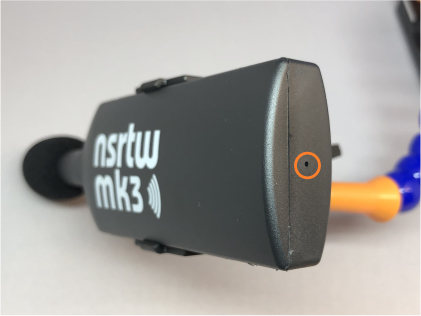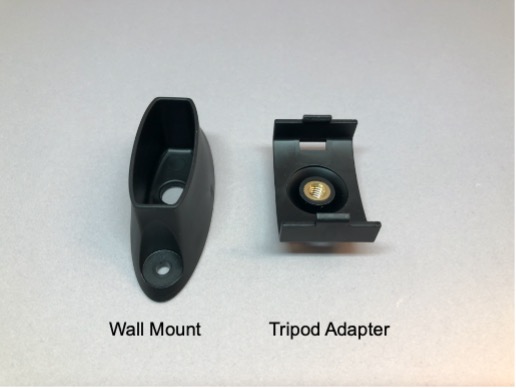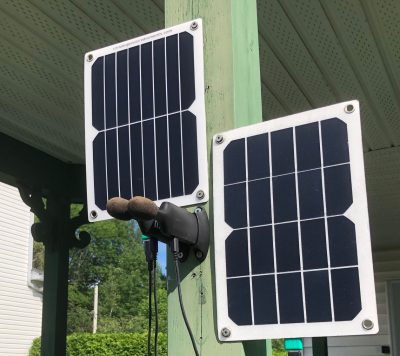The NSRT_mk3 series is designed to work outdoors. But to minimize the chances of an issue, it is important to follow the advice below.
At the bottom of the instrument is a very small hole (see Figure 1). That hole is covered by an ePTFE vent inside the casing, so water and dust cannot enter, but air can circulate freely. The function of that vent is to equalize the pressure inside the casing to the atmospheric pressure outside. Without the vent, changes in temperature, such as daily temperature cycles, will create over and under pressures inside the casing relative to the atmospheric pressure. Those daily pressure changes will, in the long run, stress the seal that keeps the casing weatherproof.
The vent must never be obstructed to ensure the integrity of the seal in the long run.

For outdoors use, only use the wall mount (see Figure 2).
Insert the instrument into the wall mount and press down firmly. The mount is slightly tapered and will hold the instrument very strongly

The instrument should be mounted horizontally, with the USB connector facing the ground (see Figure 3).

If using a solar panel, follow these directions:
Convergence Instruments 2024 © All Rights Reserved | Privacy Policy and User Agreement | Terms and Conditions | Limited Warranty